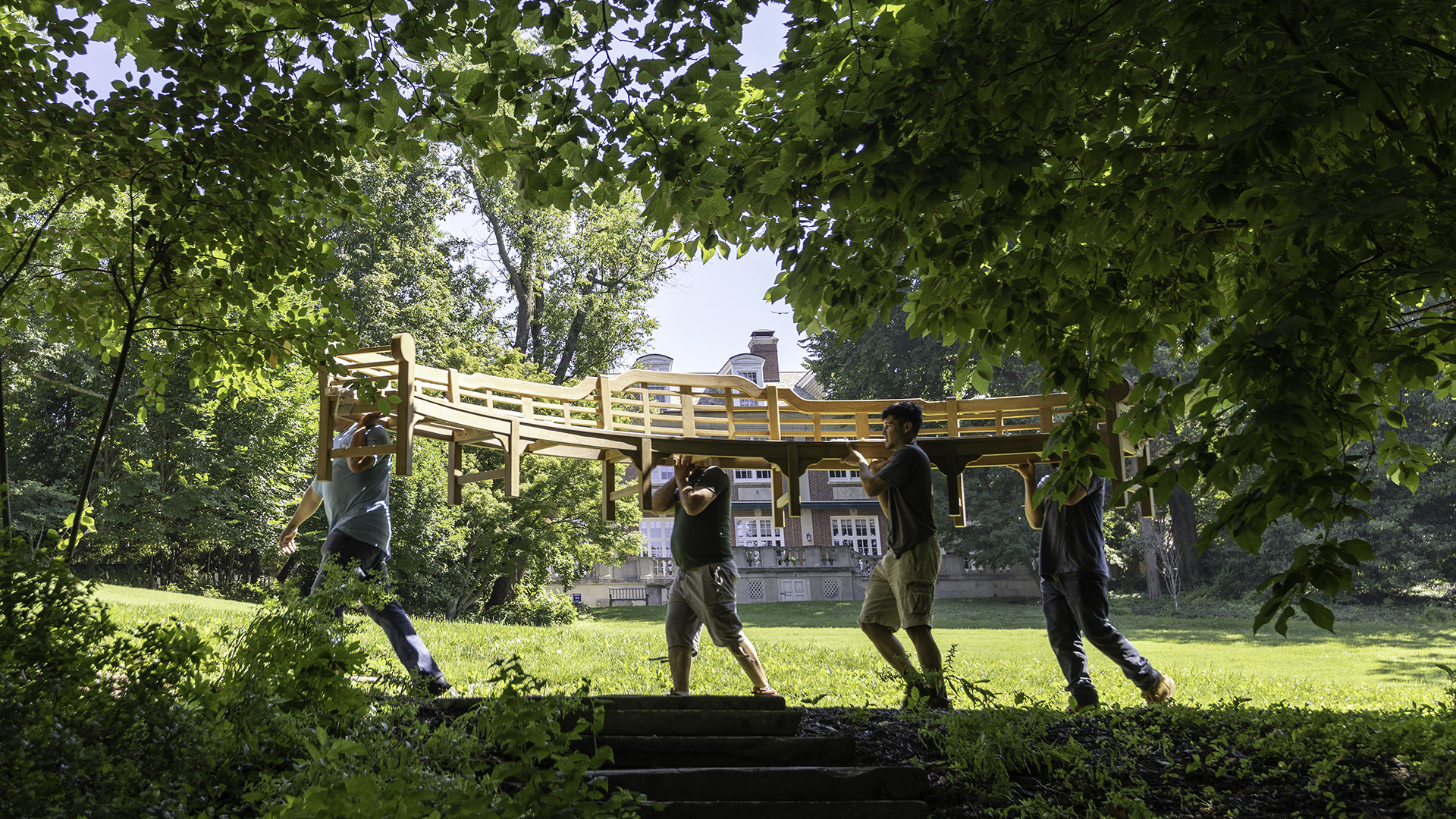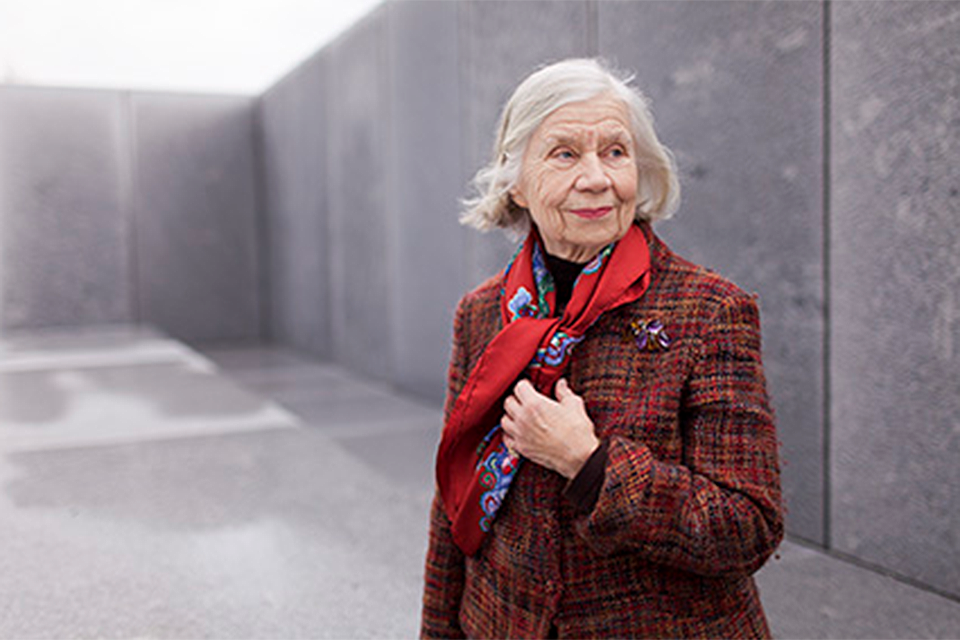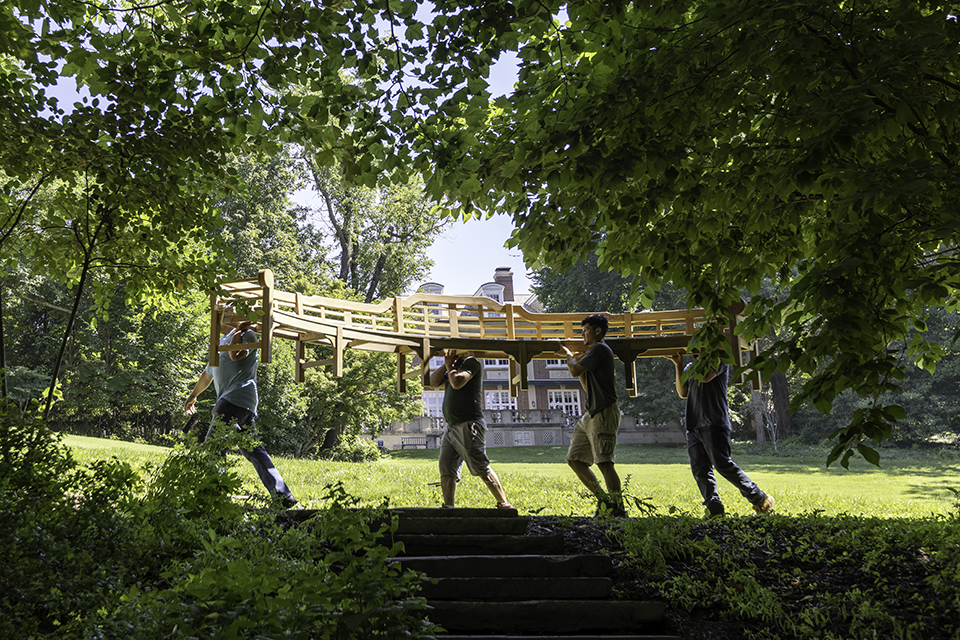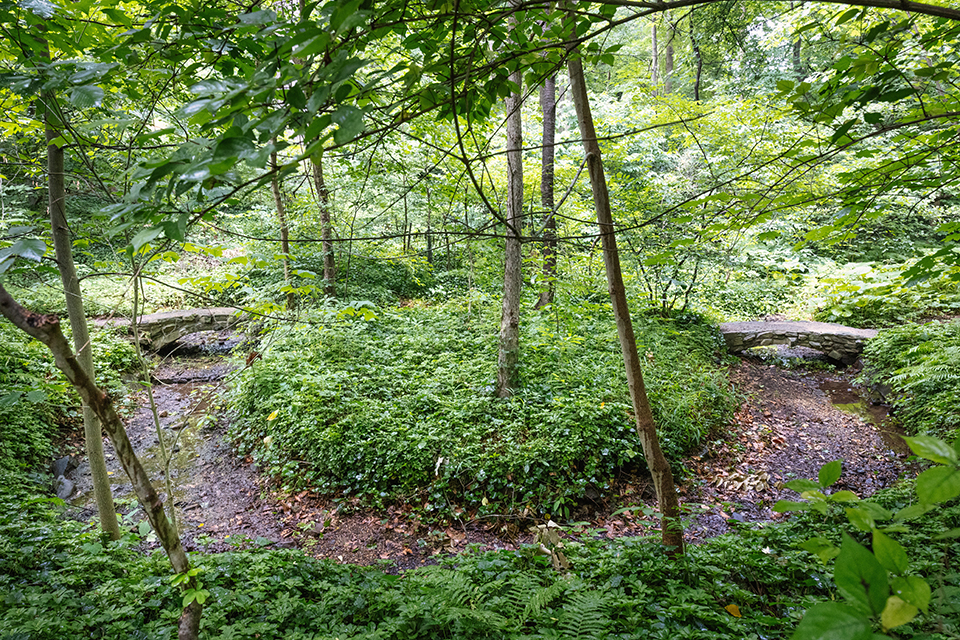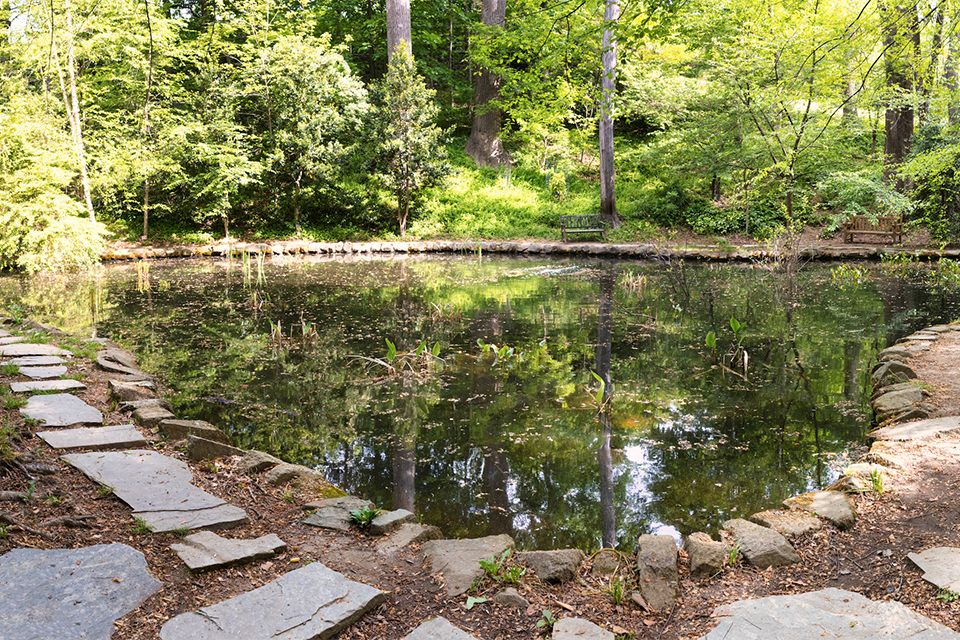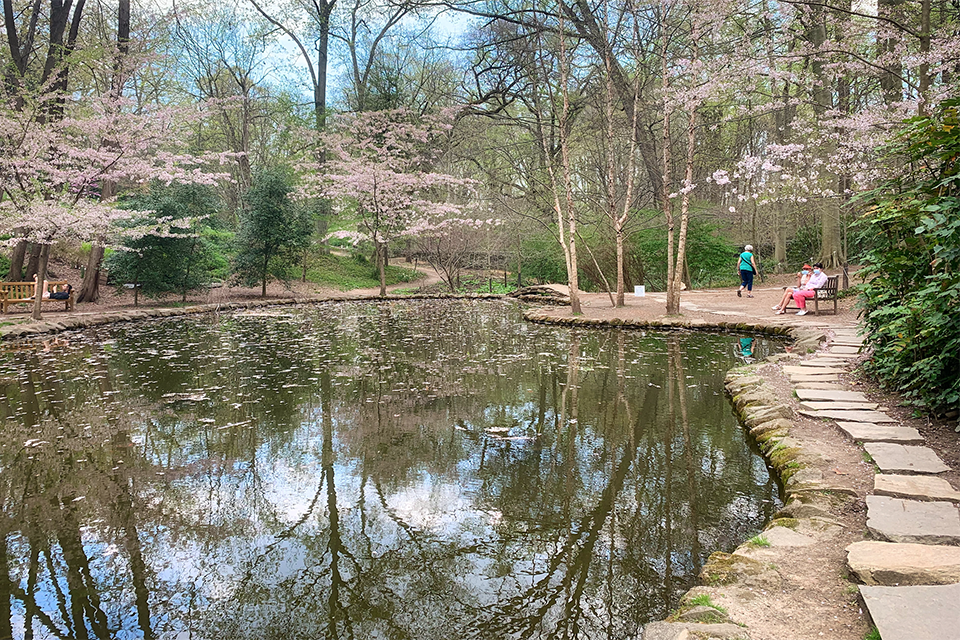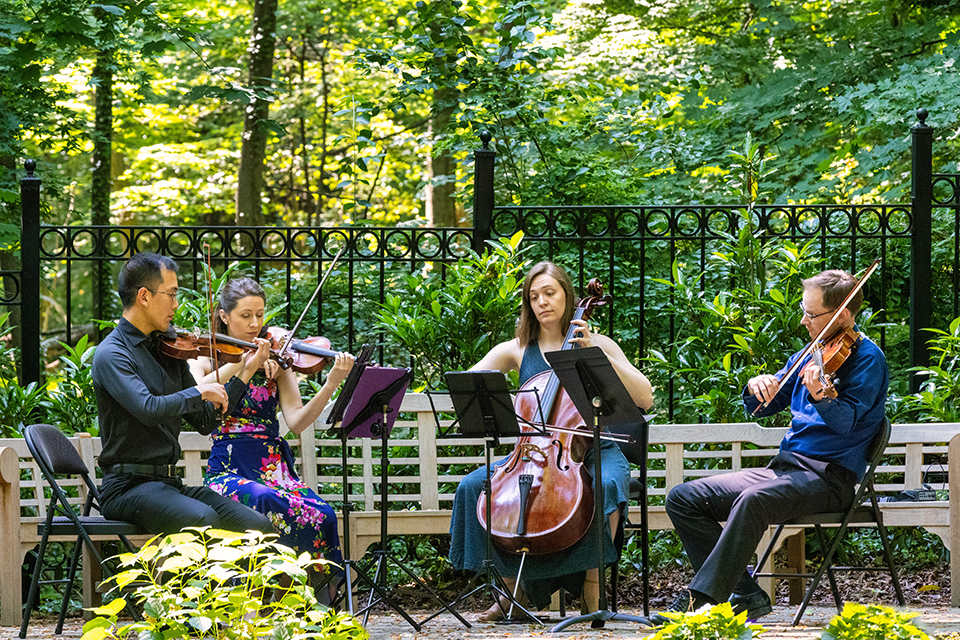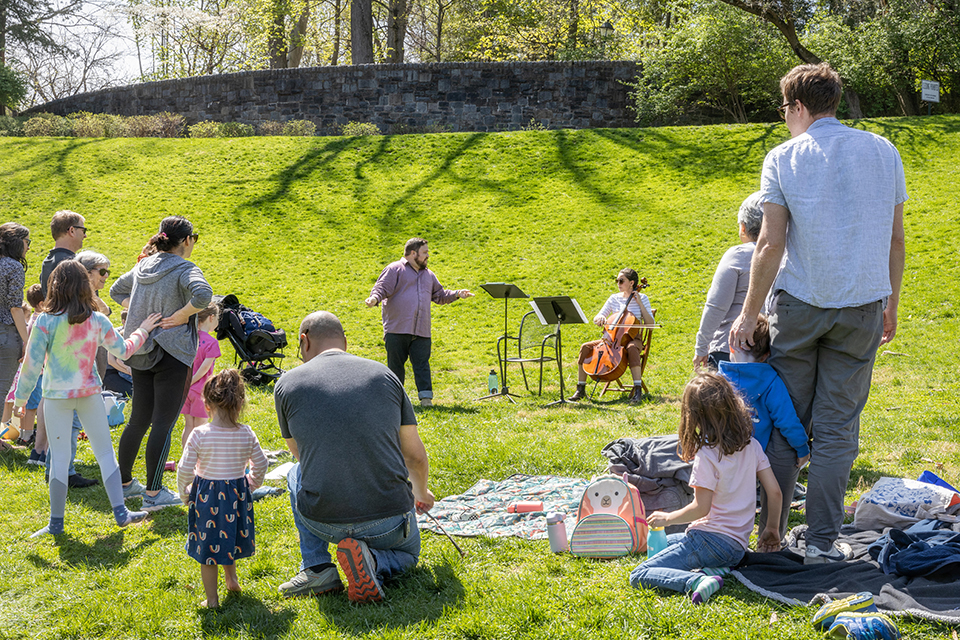This twenty-acre Country Place Era house and garden is located on the edge of Rock Creek Park. The land was acquired in the 1880s by Gardiner Greene Hubbard, founder of the National Geographic Society. Hubbard subsequently divided the property between his two daughters, one of whom – Mabel Hubbard – married Alexander Graham Bell. The Bells never lived there, selling the land to James Parmelee, a Cleveland financier, who named it “The Causeway.”
Background
In 1912 Parmelee hired Charles Platt to design a Beaux-Arts house and grounds. The estate’s original buildings – which include a greenhouse, gardener’s cottage, and carriage house – are sited atop a steeply sloped hillside overlooking formal gardens and woodland, with the city in the distance. The layout of the property follows Platt’s design of an entryway (in this case a causeway leading over a large stone bridge) bending toward an arrival court. Platt employed Ellen Shipman to design the gardens and surrounding woodlands. Shipman produced a seemingly natural but carefully composed landscape of plantings and built features. From the back terrace of the house, visitors encounter sweeping views: to the south, a meadow, woodland and a pond and cow pasture beyond; and, to the east, extensive woodland, traversed by bridle and woodland paths. In the 1930s diplomat Joseph Davies and his wife, Marjorie Merriweather Post, bought the estate and renamed it Tregaron. Post’s alterations included the addition of a dacha, or Russian folk cottage, obtained when Davies served as ambassador to the Soviet Union, regrettably placed within Shipman’s formal walled garden.
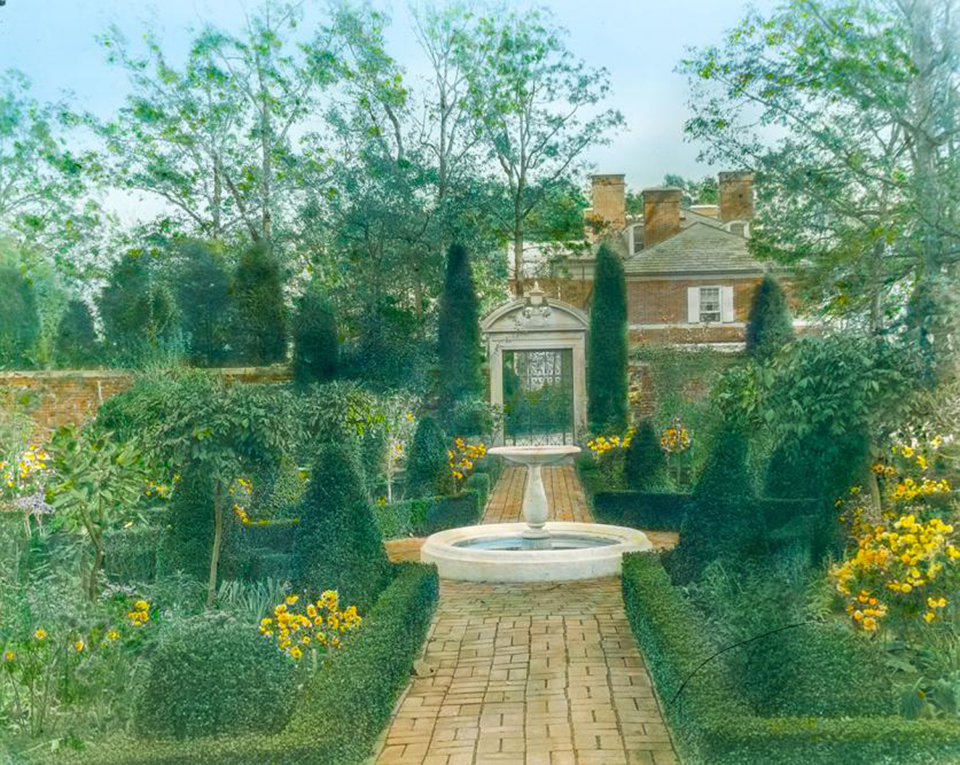 Hand-colored Glass Lantern Slide of the Formal Walled Garden, Tregaron, Washington, D.C., 1919, Image by Frances Benjamin Johnston, courtesy LOC.
Hand-colored Glass Lantern Slide of the Formal Walled Garden, Tregaron, Washington, D.C., 1919, Image by Frances Benjamin Johnston, courtesy LOC.
The estate was designated a local historic landmark in 1979 and listed in the National Register of Historic Places in 1989 as Platt’s only surviving house in Washington, D.C., and as one of only three surviving Platt-Shipman collaborations nationally. In 1980 the Tregaron Limited Partnership (TLP) and Washington International School (WIS) jointly purchased the property and divided it into two parcels. The school purchased approximately six acres, including the hilltop and all the landmark’s historic structures. TLP retained ownership of the surrounding fields and woodland with the goal of residential development. The development plans were vigorously opposed by the non-profit Friends of Tregaron (FOT), which fought to maintain the property’s historic character. In 2003 TCLF designated Tregaron a Landslide at-risk landscape. Three years later a settlement was reached under which the thirteen acres in question were donated to the newly formed Tregaron Conservancy, to be preserved in perpetuity. The estate opened to the public in 2009.
In its initial years, the conservancy was faced with the daunting task of stewarding this severely degraded landscape. As landscape historian Thaisa Way and Steve Callcott, now Deputy Historic Preservation Officer for the District of Columbia, noted in 2009, “[t]he rehabilitation of woodlands and wild gardens is a relatively new area for landscape preservation…. The challenge” for the Tregaron Conservancy “[lay] in conserving the plantings, restoring the circulation systems and aesthetic experience, rehabilitating ecologies, and interpreting the place as a designed/wild garden.” To guide their work, the conservancy consulted with the District’s Historic Preservation Office and commissioned a Cultural Landscape Report (CLR) prepared by Heritage Landscapes, completed in 2007. The CLR identified six “character areas” of the landscape from the Platt/Shipman era and their key defining features, offering recommendations on the landscape restoration and rehabilitation of those areas. The conservancy’s preservation and stewardship work garnered national attention. Nevertheless, the landscape was again threatened in 2018 when the WIS proposed to build a large classroom building and parking garage on Tregaron’s protected hilltop, which would destroy the experience of the surrounding woodland landscape.

What’s Out There Weekend Washington D.C., Washington D.C., 2010. Photo courtesy The Cultural Landscape Foundation.
Advocacy and Engagement
TCLF highlighted the site again in its Landslide program, noting that the building’s size, location, and overall impact were incompatible with the character of the landmark property. Part of WIS’ proposal called for the removal of dozens of Shipman-era trees and plants that would have destroyed the woodland landscape planned by Shipman and Platt to extend the full circumference of the estate; they also proposed converting Shipman’s walled formal garden into a courtyard with contemporary pavers and gravel, leaving no remnants of the historically significant garden behind. TCLF urged the public to attend a hearing convened by the Mayor’s Agent for Historic Preservation to consider WIS’ application and to support the advocacy group, Protectors of Tregaron Estate, and provided testimony.
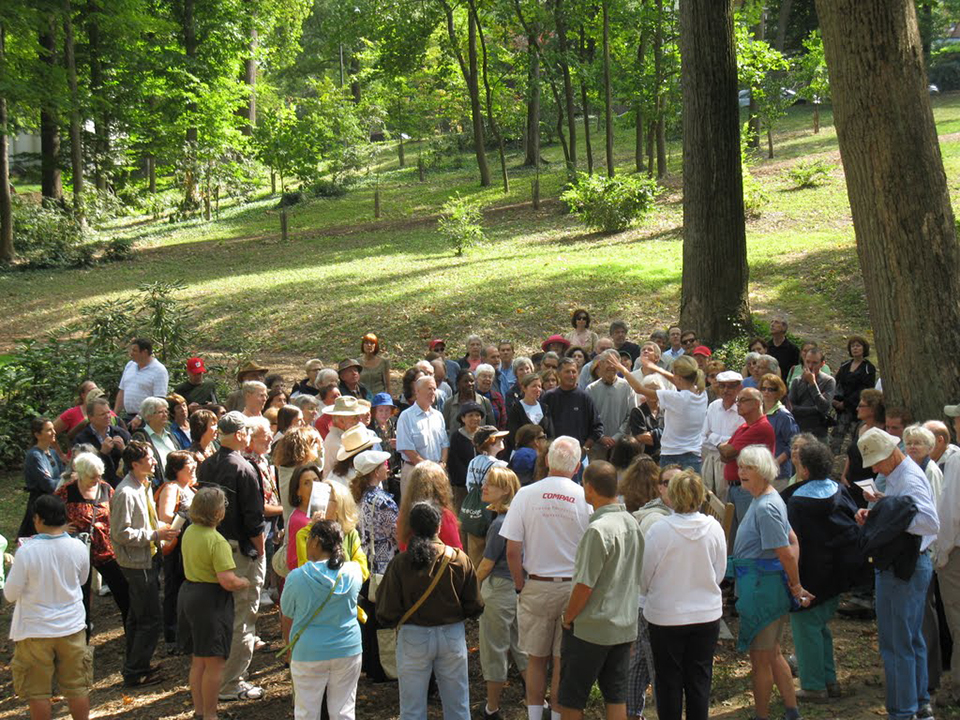 What’s Out There Weekend Washington D.C., Washington D.C., 2010. Photo courtesy The Cultural Landscape Foundation.
What’s Out There Weekend Washington D.C., Washington D.C., 2010. Photo courtesy The Cultural Landscape Foundation.
Due to public pressure the WIS jettisoned its proposal and in 2021 received historic preservation and zoning approval to construct a new academic building in the center of its campus. The new project includes restoration (not destruction) of the original four-square garden, relocation of the Davies dacha and, in consultation with the conservancy, significant landscape enhancements. The conservancy’s stewardship continues; a recently recreated original stone patio, wooden bench, and garden from the 1915 plan for the estate's pond area was named the Shipman Terrace. A gardening program has been established through which skilled volunteers "adopt" and care for each of the Shipman-inspired wild gardens. Conservancy volunteers and partner organizations (adults and students) complete hundreds of hours of invasives removal, trail maintenance, and planting work each year.
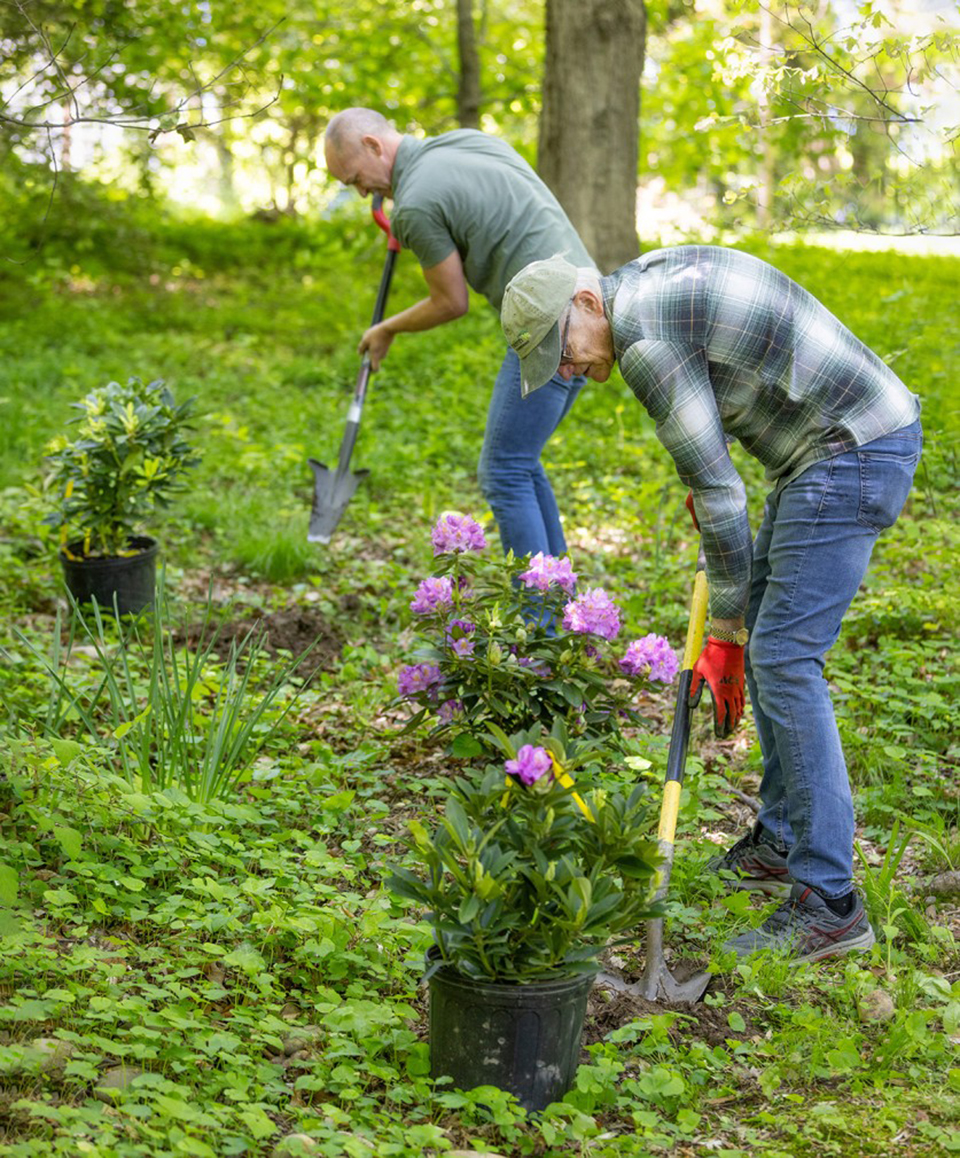 Spring planting at Tregaron, Washington D.C., 2022. Photo courtesy Tregaron Conservancy.
Spring planting at Tregaron, Washington D.C., 2022. Photo courtesy Tregaron Conservancy.
This year marks twenty years of advocacy and stewardship at Tregaron, suggesting that even with a steadfast leadership commitment, a clear mission and vision, and enthusiastic volunteers, it can take decades to restore and revitalize a treasured historic designed landscape.
Selected Resources
Harriet Pattison on Ellen Shipman and others:
“Tregaron Estate: Update on a Former Landslide Site”
“Excellent Work Continues at Tregaron Estate, a Former Landslide Site”
What's Out There Washington, D.C. Guidebook
What’s Out There Cultural Landscapes Guide, Washington, D.C.
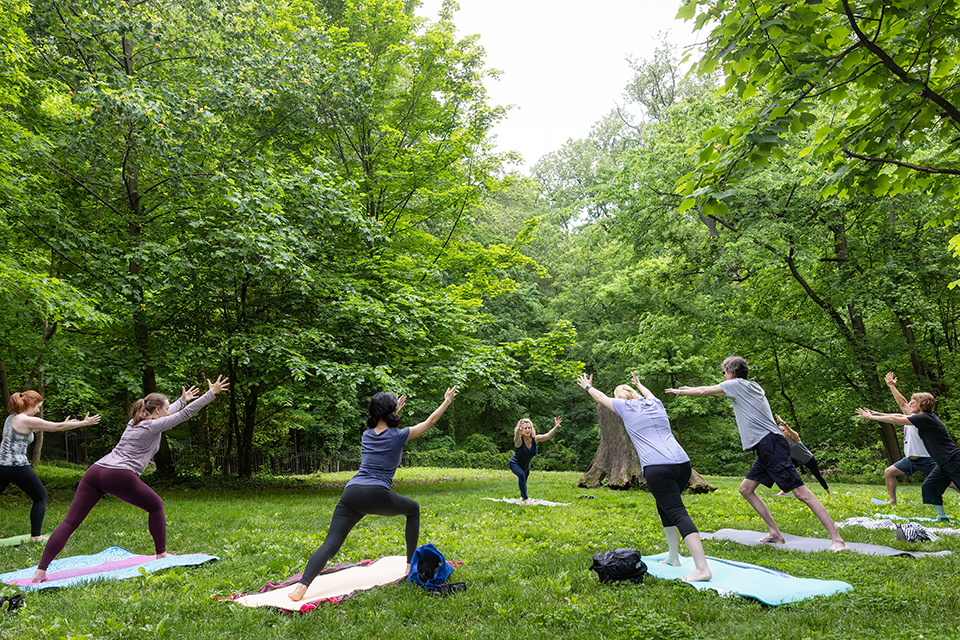
-
Tregaron, Washington, D.C., 2022. Photo courtesy Tregaron Conservancy.
